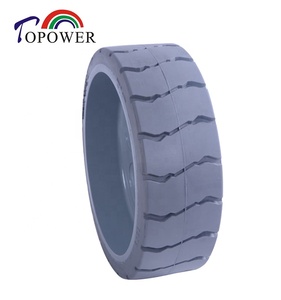
All categories
Featured selections
Trade Assurance
Buyer Central
Help Center
Get the app
Become a supplier

(3004 products available)






































According to tire measurements, the 175 70 14 tire is 175 millimeters wide, has an aspect ratio of 70, and a diameter of 14-inch in the metric system. Below are the types of 175 70 14 tires:
All-season tires:
These tires are designed to provide good performance in wet and dry road conditions. They are manufactured with durable rubber compounds that offer a grip on different road surfaces. The tread patterns are designed to enhance traction on wet roads and minimize hydroplaning risks. They are ideal for regions with mild weather and occasional snow.
Summer tires:
These tires are manufactured with a softer rubber compound. This makes them suitable for high-performance vehicles. The 175 70 14 summer tires have larger contact patches, which improves grip on dry and wet surfaces. They have specific tread designs that reduce the risk of hydroplaning and increase cornering stability. Summer tires are ideal for hot climates and regions with minimal winter conditions.
Winter tires:
These tires are designed with deep treads and are manufactured with flexible rubber compounds. This enables them to provide good traction on snow and ice. The 175 70 14 winter tires have distinctive tread patterns with more extensive biting edges and sipes, which enhance grip on slippery surfaces. Winter tires are essential in regions with cold winters and frequent snowfall.
All-terrain tires:
These tires are designed for off-road and on-road performance. The 175 70 14 all-terrain tires have open tread blocks that reduce mud and sand traction. This makes them suitable for trucks and SUVs. These tires are ideal for hiking, camping, and off-road driving enthusiasts.
High-performance tires:
These tires are designed for high-performance vehicles. The HP of the vehicles is due to the tires' excellent grip, cornering stability, and braking performance on dry and wet roads. The 175 70 14 high-performance tires have low-profile designs and wide tread widths. This maximizes the contact area with the road. This provides good handling and stability at high speeds. High-performance tires are suitable for sports cars and drivers with high-speed performance requirements.
In the world of car tires, the 175 70 14 tire size is a common option that provides a good balance of performance, comfort, and fuel efficiency. But what do the numbers on the tire mean?
For those who want good performance from their cars, a 175 70 14 tire is a great choice. It fits many small and medium-sized cars, providing good handling, braking, and fuel efficiency.
Proper maintenance is essential to keep 175 70 14 tires in good shape and last a long time. Here are some tips:
Choosing the right 175 70 14 tires for a vehicle can be a daunting task, but with the right information, it can be seamless. Here are some tips to guide the selection process:
Most people leave tire replacement to professionals. But, it is possible to replace a 175 70 R14 tire on a DIY basis. Ensure safety by reading the car owner's manual. Find out the proper jacking points and torque specifications for the particular vehicle. Have the right tools, including a jack, jack stands, lug wrench, and torque wrench.
It is important to practice with the same type of tire on a flat surface. This provides enough space for the vehicle and the tools. In good lighting conditions, proceed by loosening the lug nuts slightly while the tire is still on the ground. Then, use the jack to lift the car until the tire is off the ground. After securely placing the jack stands under the vehicle, remove the tire completely by taking off the lug nuts. Mount the new tire and tighten the lug nuts in a crisscross pattern. Lower the vehicle and do final checks. Drive the vehicle to a garage and have the wheel nuts checked with a torque wrench.
For safety and to prevent damage to the new tire, it is advisable to consult a professional when in doubt or when the process seems difficult.
Q1: What does 175 70 14 mean in tires?
A1: The numbers and letters on a tire indicate its size, construction type, and capabilities. In this case, the tire has a width of 175 mm, an aspect ratio of 70, and a diameter of 14 inches. The width measures the tire's tread surface from side to side in millimeters. The aspect ratio indicates the tire's height in millimeters, which is 70% of the width. The diameter is the size of the tire's inner rim.
Q2: What is the difference between 175 70R14 and 185 70R14 tires?
A2: The main difference is the width and sidewall height. The 175 70R14 tire is 175 mm wide, with a sidewall height of 122.5 mm. The 185 70R14 tire is 185 mm wide, with a sidewall height of 129.5 mm. The 185 70R14 tire has a slightly wider tread and a taller sidewall, which can improve traction and stability.
Q3: Can I put a 175 65R14 tire on a 175 70R14 wheel?
A3: Yes, but it is not recommended. The 175 65R14 tire has a lower aspect ratio, resulting in a shorter sidewall and a diameter reduction of approximately 2%. This smaller tire could affect handling, speedometer accuracy, and ground clearance.
Q4: What are the benefits of the 175 70R14 tire size?
A4: This tire size offers good fuel efficiency, low noise levels, and even tread wear, making it ideal for city driving and light off-road use. The larger sidewall provides better cushioning on rough roads.
Q5: Is the 175 70R14 tire size still relevant in modern vehicles?
A5: Yes, many small and compact cars still use this tire size. It strikes a balance between performance, comfort, and cost, making it suitable for various driving conditions.